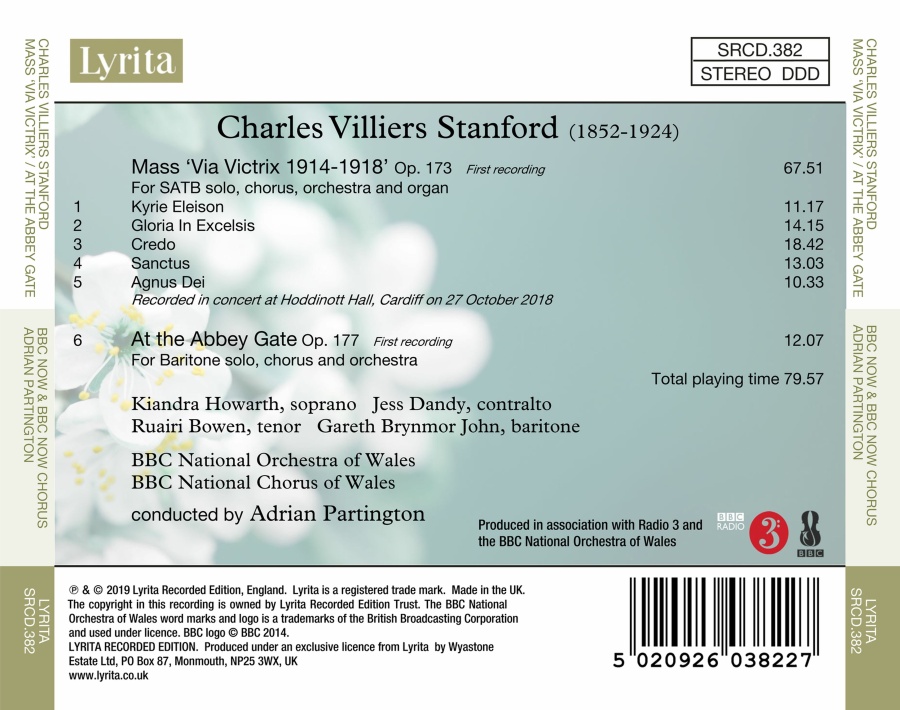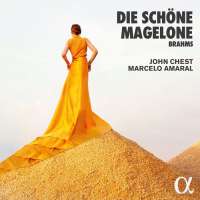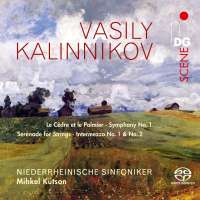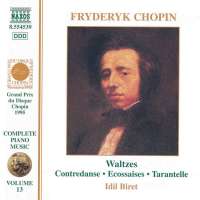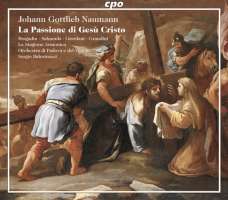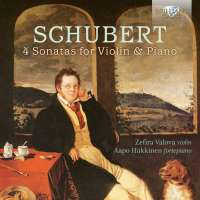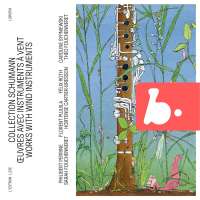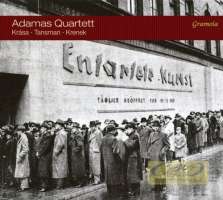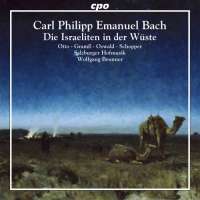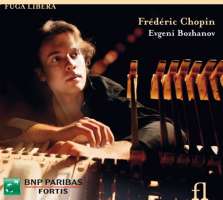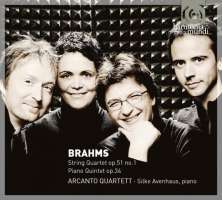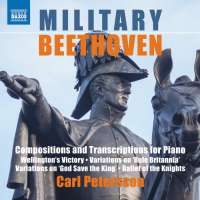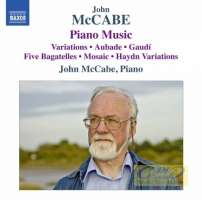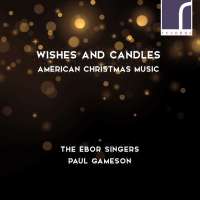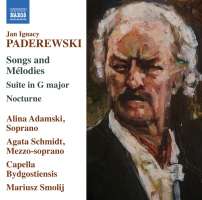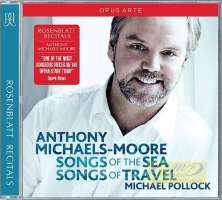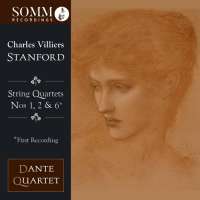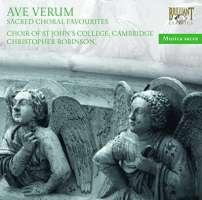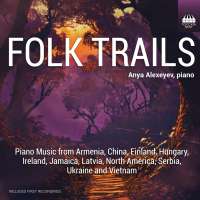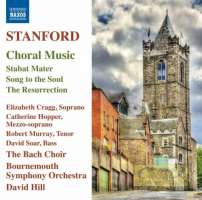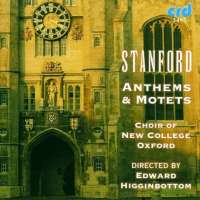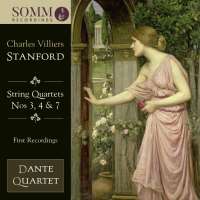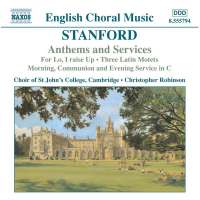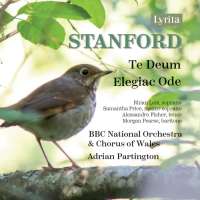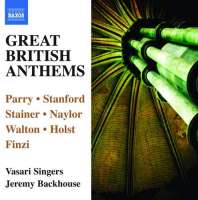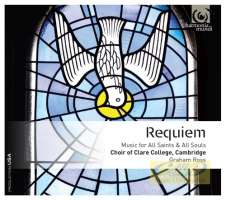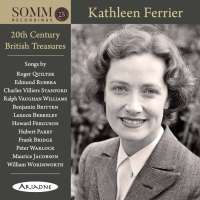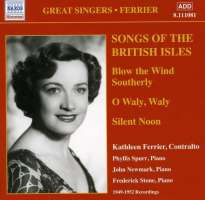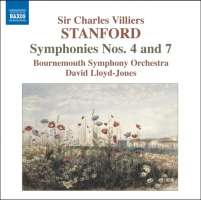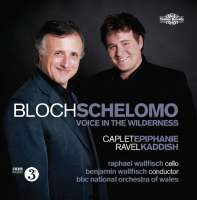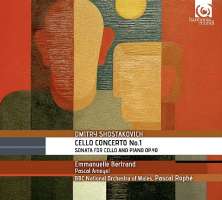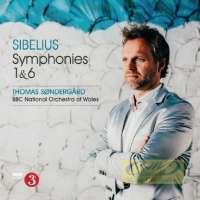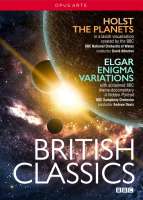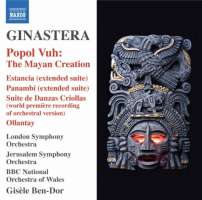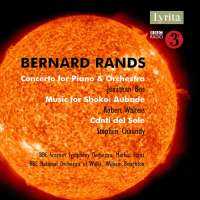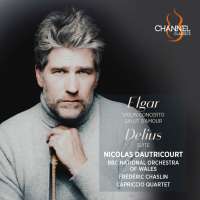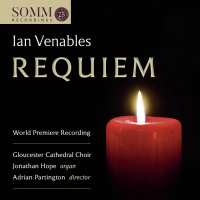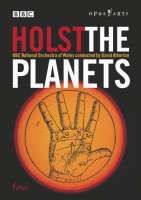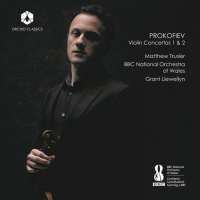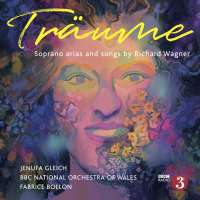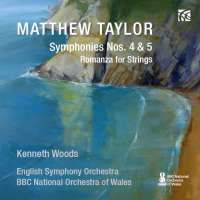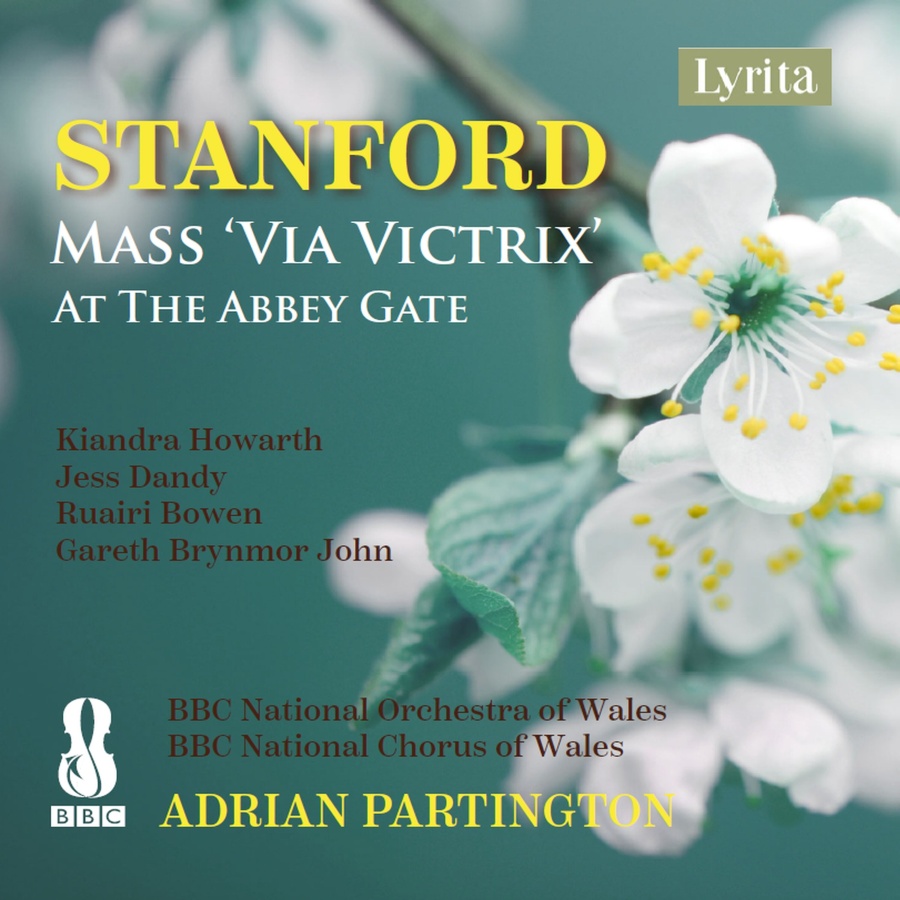
kompozytor
Stanford, Charles Villiers
tytuł
Stanford: Mass "Via Victrix"; At the Abbey Gate
wykonawcy
BBC National Orchestra of Wales;
Partington, Adrian
Partington, Adrian
nr katalogowy
SRCD 382
opis
In 1919 Stanford chose to compose a setting of the mass to commemorate the allied victory, hoping perhaps that the work might be attractive to choral societies. In terms of his music connected with the war, the Mass ‘Via Victrix 1914-1918’ Op. 173 would be his greatest and most substantial effort, and it would prove to be a canvas to equal similar large-scale choral tours de force such as his Requiem Op. 63 (1897), Te Deum Op. 66 (1898) and Stabat Mater Op. 96 (1907), all ambitiously conceived for chorus, four soloists, orchestra and organ. Bearing the adapted Latin dedication ( ‘Transiverunt per ignem et aqua et eduxisti in refrigerium’ [“(They) went through fire and water and thou has brought (them) into a wealthy place”?] taken from Psalm 66 verse 12 (from Tyndale’s translation), the work was dedicated to those who made the greatest sacrifice in defence of their country. The mass was therefore intended as a work of thanksgiving, of celebration for the final victory, but equally one which looked into the heart of the nation, to commiserate with those who grieved, to pray for those whose sense of loss was unconsolable, and to urge for a spirit of renewal in the face of the hardships and sorrows the nation had had to endure. In this sense Stanford’s work stood at the vanguard of other cathartic expressions of war grief such as John Foulds’ A World Requiem (1921), Delius’s Requiem (1914, but not performed until 1922) and Arthur Bliss’s Morning Heroes (1930). When news was made known of the unveiling of the Cenotaph and the interment of the Unknown Warrior at Westminster Abbey in October 1920, the Right Hon. Mr Justice Charles John Darling (1st Baron Darling) published a poem ‘At the Abbey Gate’ in The Times on 26 October (under the initials C.J.D.) as part of a larger article ‘To the Unknown Dead’ announcing the special nature of the ceremony on 11 November. Through a desire to commemorate this major national occasion, Stanford decided to set Darling’s poem as a march for chorus, solo baritone and orchestra. At the Abbey Gate Op. 177 was completed in November 1920 in the days following the great national ceremony. [Jeremy Dibble]
nośnik
CD
gatunek
Muzyka klasyczna
producent
Lyrita
data wydania
06-05-2019
EAN / kod kreskowy
5020926038227

(Produkt nie został jeszcze oceniony)
cena 64,00 zł
lubProdukt na zamówienie
Wysyłka ustalana indywidualnie.
Darmowa wysyłka dla zamówień powyżej 300 zł!
Darmowy kurier dla zamówień powyżej 500 zł!
sprawdź koszty wysyłki